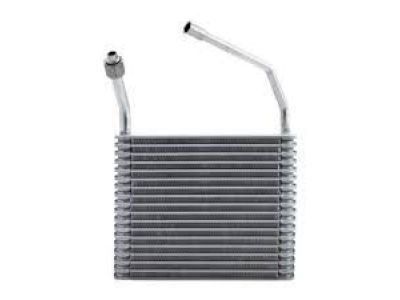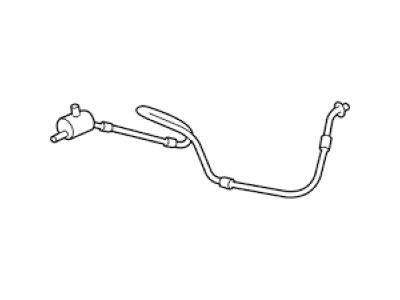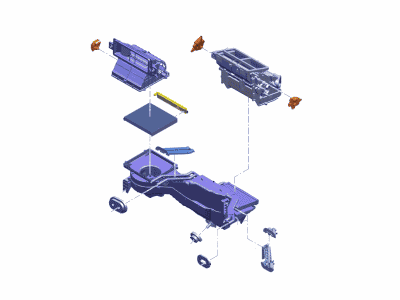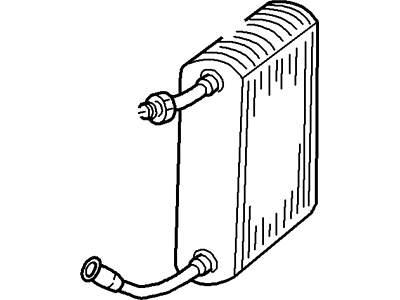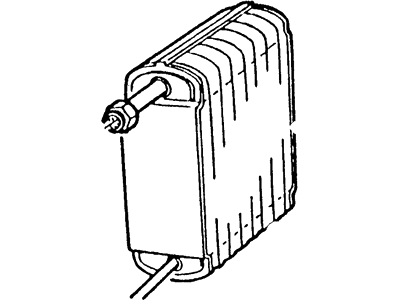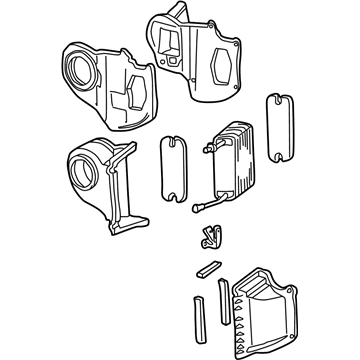×
- Live Chat
- 1-888-788-9341


My Garage
My Account
Cart
Genuine Ford Ranger Evaporator
A/C Evaporator Core- Select Vehicle by Model
- Select Vehicle by VIN
Select Vehicle by Model
orMake
Model
Year
Select Vehicle by VIN
For the most accurate results, select vehicle by your VIN (Vehicle Identification Number).
11 Evaporators found
Ford Ranger Evaporator Assembly
Part Number: 1L5Z-19850-FC$279.11 MSRP: $411.67You Save: $132.56 (33%)Ships in 1-3 Business DaysFord Ranger CORE ASY A/C EVAP
Part Number: E6TZ19860A$108.87 MSRP: $148.76You Save: $39.89 (27%)Ships in 1-2 Business DaysFord Ranger CORE - AIR CONDITIONING EVAPOR
Part Number: KB3Z-19860-AA$213.57 MSRP: $343.64You Save: $130.07 (38%)Ships in 1-3 Business DaysFord Ranger Evaporator Assembly
Part Number: 1L5Z-19850-GB$421.49 MSRP: $621.67You Save: $200.18 (33%)Ford Ranger EVAPORATOR AND HOUSING ASY
Part Number: KB3Z-19B555-AB$1031.52 MSRP: $1535.00You Save: $503.48 (33%)Ford Ranger EVAPORATOR AND HOUSING ASY
Part Number: KB3Z-19B555-BB$1043.84 MSRP: $1553.33You Save: $509.49 (33%)Ford Ranger Evaporator Assembly
Part Number: 1L5Z-19850-AA$275.72 MSRP: $406.67You Save: $130.95 (33%)
Ford Ranger Evaporator
Evaporator in Ford Ranger is an essential part of the air conditioning system since it is the primary unit consolidating space cooling by putting heat in liquid refrigeration to turn to vapor. Evaporator is situated under the dash near the heater core and its unit consists of metal tubes with fins through which heat is transferred from the air to the refrigerant. Moreover, it is also a dehumidifier where moisture within the air is also revised and drips out of the vehicle. A considerably frequent component to change due to the formation of its leaks over the time, fluctuation in temperature, as well as the total build-up of dirt on the A/C Evaporator so as to help in maintaining cool temperatures inside the cabin.
We provide a wide range of Ford Ranger Evaporator at the best prices possible. If you need Ford Ranger Evaporator, you can shop with confidence on our website. All our OEM parts come with a manufacturer's warranty and are delivered to your door step with a fast delivery service.
Ford Ranger Evaporator Parts Questions & Experts Answers
- Q: How to replace the evaporator on 1993-2011 Ford Ranger?A: On 2001 and later models, the evaporator is serviced as an assembly with the evaporator housing and isn't available individually. The accumulator should be replaced whenever the evaporator is replaced. Start by having the air conditioning system discharged. Then, disconnect the cable from the negative terminal of the battery. On 2011 models, remove the air filter housing duct. Remove the accumulator. Remove the fasteners to the vacuum reservoir tank and bracket and set aside, if equipped. Move the cruise control servo aside by disconnecting the electrical connector and removing the mounting screw, if equipped. On 2001 and later 2.3L engines, remove the air conditioning compressor. On 3.0L and 4.0L V6 engines, remove the coolant and windshield washer reservoirs mounted together. Disconnect the Blower Motor and blower motor resistor electrical connectors. On 2001 and later engines, disconnect the heater hoses from the heater core tubes. Move the window washer hose and small hose retainer aside. Disconnect the heater control vacuum hose from the vacuum control valve. Disconnect the refrigerant line from the evaporator to the condenser using a spring lock coupling tool. Cap the lines to prevent entry of dirt and moisture. On 3.0L and 4.0L V6 engines, remove the hose bracket from the top of the A/C evaporator housing. On 4.0L V6 engines, remove the hose bracket mounted on the rear of the engine. Remove all fasteners to the evaporator housing noting that some may exist inside the passenger compartment at the firewall. On 2001 and later, disconnect the vacuum hose connector from inside the passenger compartment. Remove the evaporator housing. On 2000 and earlier models, remove the core. Installation is the reverse of removal with the following additions: Replace all O-rings with new ones specifically made for air conditioning system use. Lubricate them with special PAG refrigerant oil designed for use in R-134a systems. Use mineral oil on R-12 systems. Caution: Do not use the wrong lubricant or you may contaminate the system. Have the system evacuated, recharged and leak tested by the shop that discharged it.
- Q: How to replace the evaporator on 2000-2011 Ford Ranger?A: On 2001 and later models, the evaporator is serviced as an assembly with the evaporator housing. It is not available individually. The accumulator should be replaced whenever the evaporator is replaced. Start by having the air conditioning system discharged. Then, disconnect the cable from the negative terminal of the battery. On 2011 models, remove the air filter housing duct. Remove the accumulator. Remove the fasteners to the vacuum reservoir tank and bracket and set them aside (if equipped). Move the cruise control servo aside by disconnecting the electrical connector and removing the mounting screw (if equipped). On 2001 and later 2.3L engines, remove the air conditioning compressor. On 3.0L and 4.0L V6 engines, remove the coolant and windshield washer reservoirs mounted together. Disconnect the Blower Motor and blower motor resistor electrical connectors. On 2001 and later engines, disconnect the heater hoses from the heater core tubes. Move the window washer hose and small hose retainer aside. Disconnect the heater control vacuum hose from the vacuum control valve (in-line with one of the heater hoses). Disconnect the refrigerant line from the evaporator to the condenser using a spring lock coupling tool. Cap the lines to prevent entry of dirt and moisture. On 3.0L and 4.0L V6 engines, remove the hose bracket from the top of the A/C evaporator housing. On 4.0L V6 engines, remove the hose bracket mounted on the rear of the engine. Remove all fasteners to the evaporator housing, noting that some may exist inside the passenger compartment at the firewall. On 2001 and later models, disconnect the vacuum hose connector from inside the passenger compartment. Remove the evaporator housing. On 2000 models, remove the core. Installation is the reverse of removal with the following additions: Replace all O-rings with new ones specifically made for air conditioning system use. Lubricate them with special PAG refrigerant oil designed for use in R-134a systems. Use mineral oil on R-12 systems. Do not use the wrong lubricant or you may contaminate the system. Have the system evacuated, recharged, and leak tested by the shop that discharged it.
Related Ford Ranger Parts
Browse by Year
2023 Evaporator 2022 Evaporator 2021 Evaporator 2020 Evaporator 2019 Evaporator 2011 Evaporator 2010 Evaporator 2009 Evaporator 2008 Evaporator 2007 Evaporator 2006 Evaporator 2005 Evaporator 2004 Evaporator 2003 Evaporator 2002 Evaporator 2001 Evaporator 2000 Evaporator 1999 Evaporator 1998 Evaporator 1997 Evaporator 1996 Evaporator 1994 Evaporator 1993 Evaporator 1992 Evaporator 1991 Evaporator 1990 Evaporator 1989 Evaporator 1988 Evaporator 1987 Evaporator 1986 Evaporator
